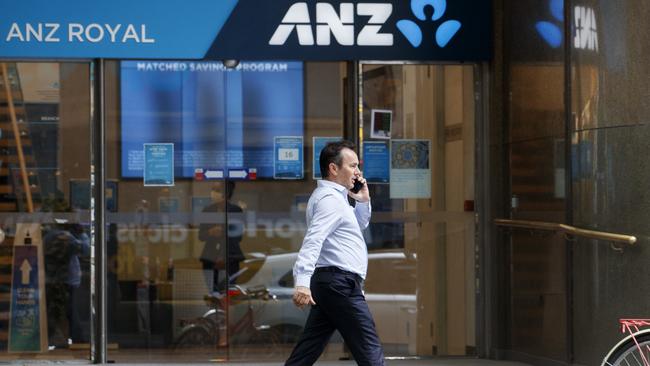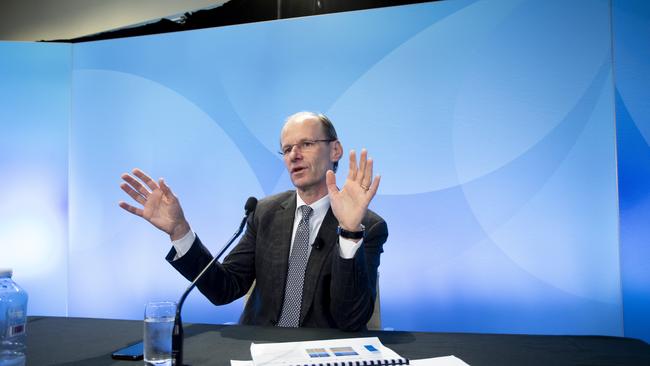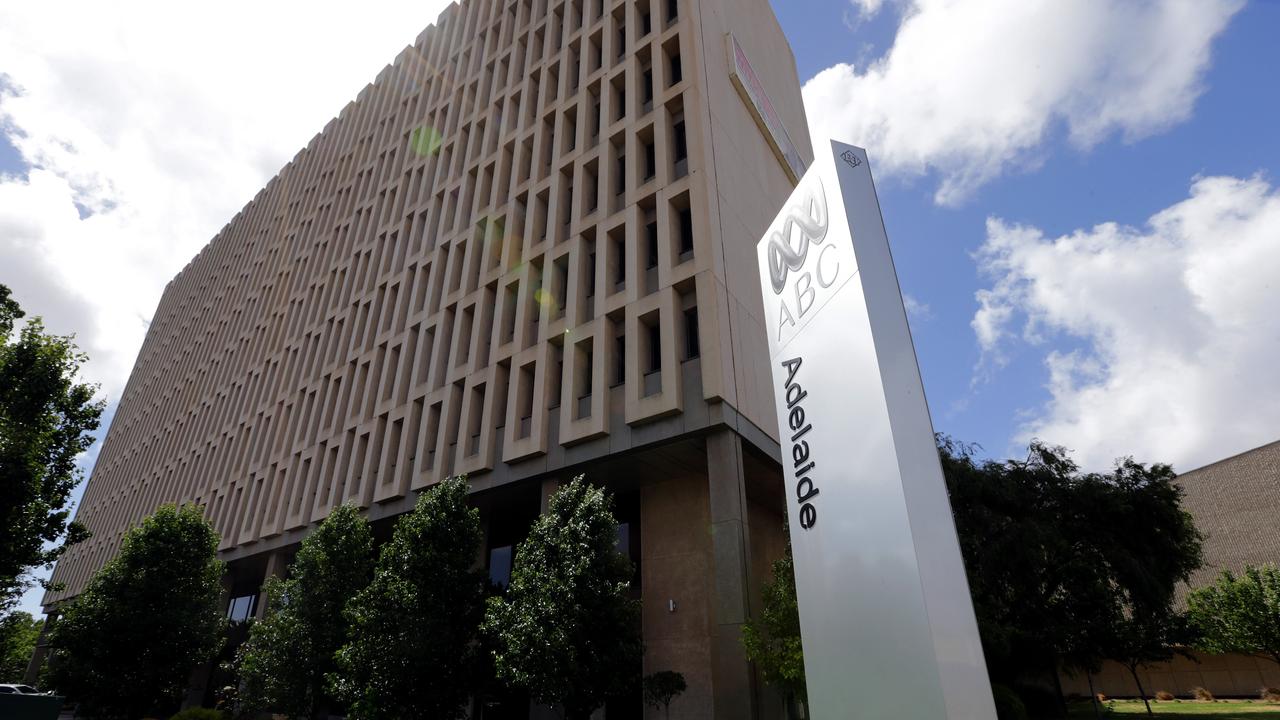Banks see future of fewer branches
ANZ chief executive Shayne Elliott reckons visiting a bank branch is like going to the dentist, and we all know what that means.

Business
Don't miss out on the headlines from Business. Followed categories will be added to My News.
If ANZ chief executive Shayne Elliott is right when he says visiting a branch is like going to the dentist, a single face-to-face encounter with a teller every six months or so isn’t going to sustain a sprawling industry network of about 5000 outlets dotted around the country.
Elliott first used the dentist analogy, which is based on a customer’s assessment of the branch experience, almost four years ago.
Since then, the nation’s banks have shuttered 643 branches, from 5816 in June 2017 to 5173 in June last year — an 11 per cent contraction.
While this year’s official figures are not yet available because the prudential regulator collates the annual data in October, the trend has only accelerated since last year because of the huge adoption of digital channels due to COVID-19.
Occasional nuggets of feedback and the generational shift in branch usage, with foot traffic falling 10 per cent a year over the past three years, have convinced Elliott to take radical action.
Of the major banks, ANZ is the most aggressive exponent of branch rationalisation. It has broadly confirmed it will shrink its 570-strong network at the start of last year by 146, or 25 per cent, to “about 420” by October.
On Sydney radio after Wednesday’s half-year result, Elliott elaborated on the dentist analogy.
“You don’t really want to go; you only go because you have to, and as technology has improved, actually do you know what? You don’t have to go — you can make payments, you can open a credit card, you can block your credit card, you can do whatever you like, more or less,” he said.
“So that convenience is what’s really driven traffic down in the branches, and then at some point they’re not viable.”
However, the future would not be branchless. Customers would still visit for coaching about how to buy a house, or start a business.
Conversations, according to Elliott, were superseding transactions, and banks had to respond by making sure that branches were staffed with the right people with the appropriate skills.
The switch to digital, accelerated by the pandemic, is a global mega-trend.
Citi bank analyst Brendan Sproules says the number of over-the-counter branch transactions worldwide has fallen by 30 per cent in three years.
“The banks are holding expensive real estate and they’re asking themselves: ‘How do my customers want to interact with me?’ ” Sproules says.

FSU national secretary Julia Angrisano says the banks were reminded of their social licence to operate and their importance as an essential service provider in the last serious round of branch closures in the early 2000s.
While COVID was the excuse this time, it’s simply not true, she says, that all customers want to use digital channels, with a significant proportion wanting access to a branch close to where they live.
Angrisano says the banks’ own data shows that two-thirds of customers have made the online transition, which suggested that one-third preferred the physical environment.
“There’s also been a hollowing out of skills in retail banking as the banks centralise or try to service customers from call centres,” Angrisano says. “Our members have to push their customers to adopt digital channels so they’re caught in the middle — effectively they have to participate in the demise of their own jobs.”
Despite pockets of hostility towards closures, particularly in more sensitive regional areas, the widespread community hostility that greeted previous rationalisation efforts has gone missing.
Last year, ANZ sent out one million letters to customers, advising them about permanent or temporary closures. It received only 2000 responses.
ANZ general manager of retail Tony Tapsall attributes this to dedicated teams who are helping customers with their digital transition, and the multitude of available devices.
“Some people don’t want to hear that their branch is closing, but the number of over-the-counter transactions has fallen 50 per cent over the last four years and 22-25 per cent over the last 12 months,” Tapsall says.
“In the vast majority of cases, those transactions have not returned to the branches post-COVID.”
Branch rationalisation is a big component of Westpac’s strategy, unveiled on Monday, to slash more than $2bn from its $10.2bn annual cost base by the 2024 financial year.
Citi’s Sproules said in a report last month that Westpac could save $850m over the next three years by slashing its network by 45 per cent.
Using geospatial analysis, and assuming one metropolitan branch could be closed if it was within 3km of another, Sproules concluded that Westpac could shrink its 958 branches to 518.
While Westpac says it doesn’t have a target in mind, it has flagged that one of the bank’s suite of brands, including St George, BankSA and Bank of Melbourne, could be co-located with another one.
Trials of the novel approach have started in Renmark in South Australia and Alice Springs, with branches in Dubbo, NSW moving to a co-located site.
At the half-year result on Monday, Westpac chief executive Peter King forecast a further 40 per cent cut in branch transactions by the end 2024.
Asked if this would translate to a 40 per cent shrinkage in the network, King said no.
“But I would say that branches will be different; they’ll be smaller,” he said.
“In regional Australia we’re doing things like co-locating the brands in certain premises so that’s reducing property costs, so even though we are represented in those regional areas we are reducing property costs.”
While Elliott likens banking in branches to going to the dentist, his National Australia Bank counterpart Ross McEwan prefers a petrol station analogy.
“I can remember, at university, working for a service station where I’d go out and I’d pump the petrol, check the oil, do the tyres and wipe the windscreen,” McEwan said.
“It has changed, and people in most cases don’t want the bonnet lifted up, nor does the manufacturer, and customers are quite happy to pay for petrol that’s cheaper when they do it all themselves. That’s effectively what’s happening in banking.”
Originally published as Banks see future of fewer branches



